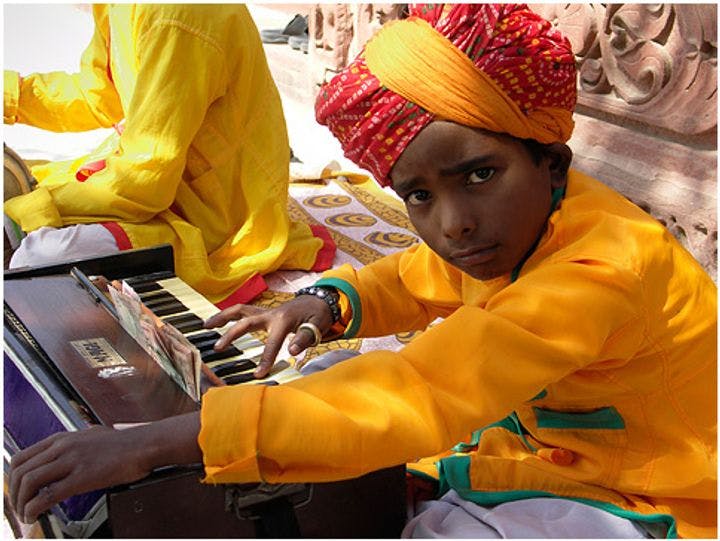Winter 2012
India's Musical Menace
– The Wilson Quarterly
The harmonium has played a fraught but indispensable role in modern Indian music.
The poet and composer Rabindranath Tagore famously pronounced it the "bane of Indian music.” One listener described it as “a torture only fully appreciated by those who have undergone it.” Another called it simply “a menace.” The contraption responsible for all this suffering? Why, the harmonium, one of India’s most widely played musical instruments.
According to University of Minnesota ethnomusicologist Matt Rahaim, the harmonium has played a fraught but indispensable role in modern Indian music. The benighted keyboard instrument was developed by a French inventor in the mid-19th century. Homesick colonists in India liked the harmonium, a cheaper and more durable alternative to organs and harpsichords, as the latter two often finished the long voyage east warped and unplayable. Indian craftsmen quickly learned to manufacture harmoniums, and soon their compatriots incorporated the instrument into performances of Indian classical music. In comparison to traditional instruments, the harmonium was easy to tune and a cinch to learn to play. It also lacked the cultural baggage of instruments such as the sarangi, an Indian fiddle that had an unsavory association with the world of courtesans.
As the Indian independence movement gained steam in the early 20th century, however, the harmonium became a target of anticolonialists. High-minded Indian music critics began to elaborate an indigenous theory of Indian tuning with a “single, unique Indian gamut of pitches” that some said the European import could not produce. In 1930, the instrument was effectively banished from Indian classical music performances; 10 years later, All-India Radio, the influential state-run broadcaster, banned it from its programs.
The ban was loosened in 1970, after a critic, noting its elitist, caste-oriented character, argued that the harmonium “should not be treated as an ‘untouchable.’ ” The harmonium would be allowed under certain circumstances (depending, for instance, on which instrument it accompanied). Solo performances of the harmonium are still banned on All-India Radio, and musicians specializing in the instrument are not eligible for full-time staff positions with the network.
As elites have struggled to cleanse modern Indian music of what they argue is a “foreign” intruder, the masses have used the harmonium as a gateway to an understanding of their musical heritage, Rahaim explains. The harmonium is well suited to teaching the fundamentals of Indian musical grammar and to accompanying choral groups. Today, “the harmonium is seen and heard in villages and cities, in concert halls and private homes, in trains, temples, and theaters,” Rahaim writes. Tagore must be rolling over in his grave.
* * *
The Source: "That Ban(e) of Indian Music: Hearing Politics in the Harmonium" by Matt Rahaim, in The Journal of Asian Studies, August 2011.
Photo courtesy of Flickr/nevil zaveri
Up next in this issue
